Sydney's tree wars: Greed and harbour views fuel vandalism
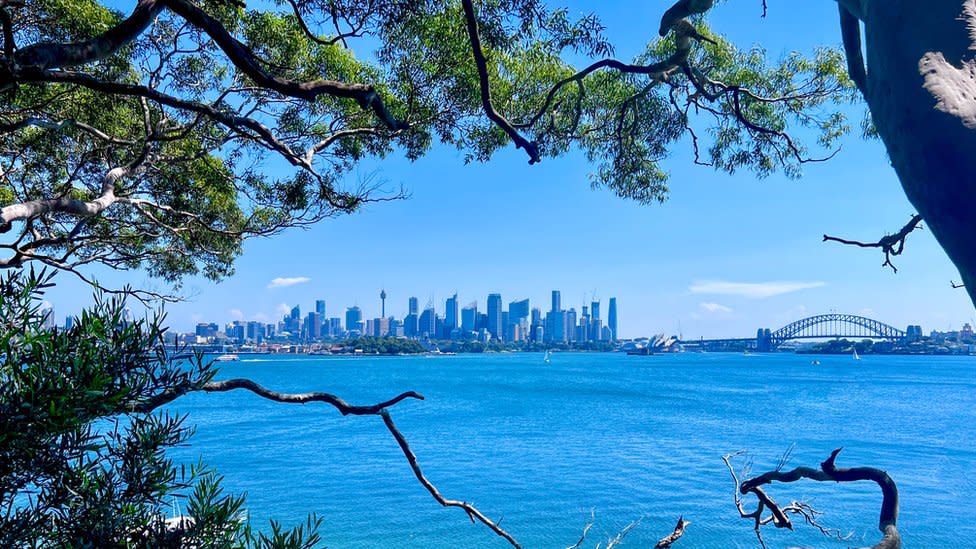
On a balmy February evening in Sydney, a figure disguised in a black hoodie stole up to a row of iconic trees, drill in hand.
Under the cover of darkness, the man allegedly tried to kill nine of the beloved figs which have watched over Balmoral Beach for over a century.
"I get quite emotional actually," local mayor Carolyn Corrigan says, recounting the attack.
"I close my eyes and I just can't imagine Balmoral without those figs."
In recent months, a string of similar incidents in some of Sydney's leafiest and wealthiest suburbs has baffled a nation rather attached to its bushland.
Hundreds of trees have been ruthlessly cut down, drilled and laced with poison, or stripped bare - conveniently exposing the kind of harbour views that drastically increase property values.
"It's selfishness and greed, there's no other way to describe it," says John Moratelli, who runs an environmental protection group.
"It's just the worst of human nature really."
Paradise blighted
In Australia, laws enforced by local governments dictate how and when trees can be removed on private property.
Those breaking the rules are usually clearing land for agriculture or development. Otherwise, it's a tree here or there in a suburban backyard or two.
But recently, Sydney councils have noticed an increasing trend of what they call "tree vandalism" - much of it on public land. More than 1000 reports of trees being damaged or killed were made last year, according to the Sydney Morning Herald.
The most shocking, a brutal mass clearing in Castle Cove.
The suburb is a slice of paradise just 10km (6.2 miles) from the heart of Sydney - sea eagles soar overhead, peckish swamp wallabies mow the grass on your front lawn, and everything from bandicoots to snakes are regular visitors.
One resident tells the BBC that he once even spotted a whale from his balcony.
Last July, a pair of walkers heard a chainsaw at work inside a steep reserve sandwiched between multi-million-dollar mansions and the shore. They reported it to authorities, but it was weeks before the council discovered the carnage.
Some 265 trees and plants, the equivalent of 14 tennis courts, had been razed - cut down or pierced with a drill and injected with poison, sometimes both. So much chemical was used that, initially, there were fears the run-off could wipe out the harbour's marine life.
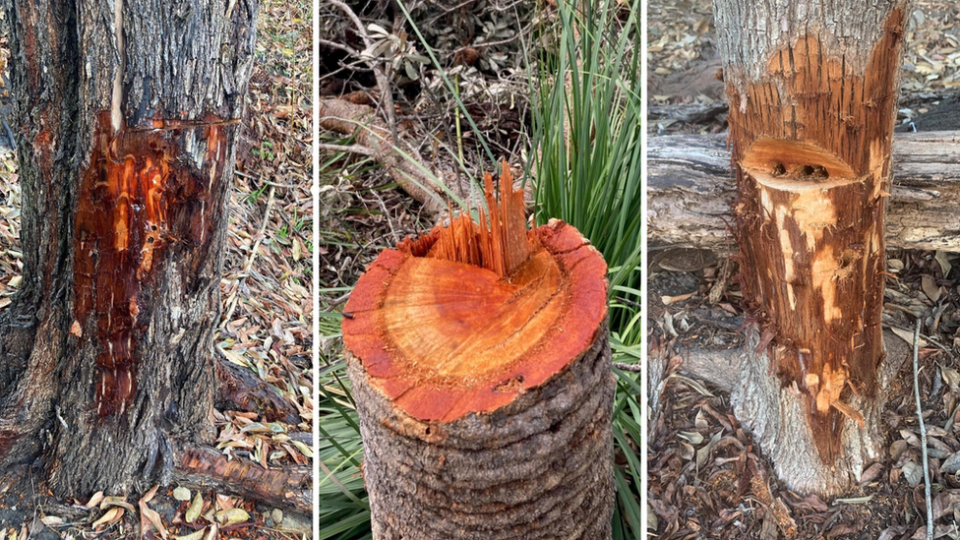
The culprits left behind little evidence: just a pair of green gloves, a bottle of herbicide, and an old sign warning against tree vandalism which they'd apparently ripped out and tossed down the slope.
A local was so stunned by the rumoured scale of the damage that he drove to the other side of the harbour to see it for himself.
"I thought: 'That can't possibly be right'," said the man, who has asked to be called Bill - not his real name - because tensions in the community are so high.
"It was astounding… They'd really done a number on it."
Willoughby Mayor Tanya Taylor was similarly "gobsmacked" when she heard about the destruction.
"It was actually, ironically enough, around National Tree Day that I found out," she says, gazing out over the bushland, which is still scorched brown nine months on.
Faded pink ribbons marking vandalised plants shudder in the breeze as the sun beats down on the sparkling - now exposed - water below.
The natural environment here is "invaluable" and this loss unquantifiable, Ms Taylor says.
"That tree down in front of us here," she points to an iconic Sydney red gum, which is now skeletal, "it's 100 years old, 20m (65ft) high."
"You cannot replace that. That's generations worth of growth."
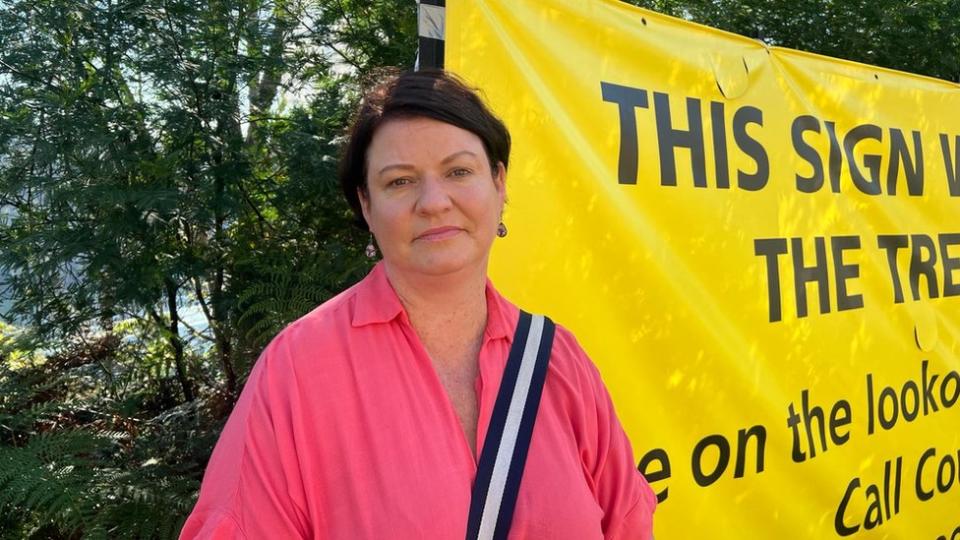
In November, in nearby Longueville, authorities discovered a similar cull. This time, almost 300 trees and plants had been downed - again, next to harbourfront homes.
A couple of peninsulas away, signs around the scenic Bay Run mark where mangroves have been ripped from the banks of Iron Cove. Behind the walkway sit what Canada Bay Mayor Michael Megna calls "McMansions".
He says even the new trees that his council plants often aren't safe from view-hungry vandals.
"It's been two steps forward and one step back."
'Personal entitlement'
To many, the killings are confusing because Australians famously love bushland.
The poetry of Banjo Patterson and Henry Lawson, quasi-national anthem Home Among the Gum Trees, the adventures of Skippy the Bush Kangaroo: an admiration and wary respect for the bush has long defined the country's culture and identity.
"It's in Australia's DNA," says Mr Megna.
Urban bushland is a haven for wildlife, beautifies suburbs and has marked mental health benefits. And as climate change and pollution increasingly heat the nation's cities, it acts as both their lungs and their shade.
All the locations where these dramatic tree culls have occurred are coveted precisely for these reasons.
Some people suggest the fire risk that thick bushland poses could be driving the behaviour.
But the councillors the BBC spoke to are unanimous: "We should call a spade a spade… It's an increased sense of personal entitlement," says Ms Corrigan.
"That sense that… 'I have paid for this view'. Rather than 'I have paid for this house'."
Councils in the state of New South Wales can issue fines up to A$3,000 ($1,955; £1,565) for individuals and A$6,000 for companies. That climbs up to A$5m for individuals or companies they pursue through the courts.
But local governments say that while the motive is plain and the culprits are often obvious, making them pay is another story.
Councils must build a case against the suspected slashers themselves, which is difficult and costly, given they aren't investigative bodies.
Police help where they can, but prosecutions are often near impossible and almost pointless. Ultimately, there are few convictions, and penalties are so low people shrug them off.
According to the New South Wales Land and Environment Court, 90 cases of unlawful clearing have been prosecuted in the state over the past five years. The top penalty in that period was A$348,000, for a farmer who cut down 5 sq km (1.9 sq miles) of vegetation - an area almost double the size of Sydney's main business district.
The regulations pale in comparison to those in countries like the UK, where in 2023 the government introduced uncapped fines and jail time for anyone illegally felling trees.
"People are paying between A$3m and A$8m for some of these houses - maybe more," says Bill.
"Paying some turkey A$10,000 to cut down a few trees is nothing, and paying the council a fine is probably nothing as well."
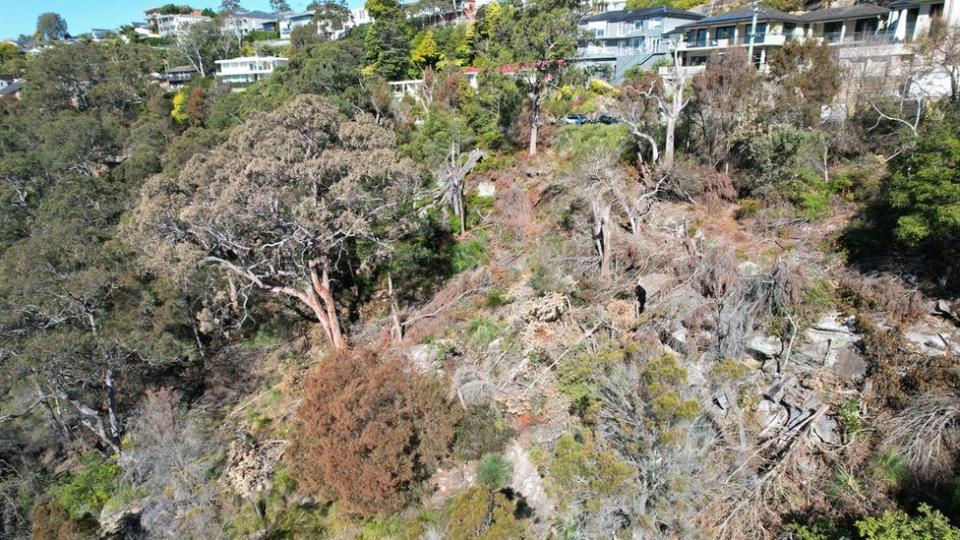
Frustrated councils are left to put up signs begging people not to vandalise trees and to dob in their neighbours.
In Castle Cove, the council briefly parked a mobile billboard on the street, which blocked the new views, but upset locals quickly complained it was collective punishment and lobbied to have it removed.
In its place, they strung up a banner decrying the "selfish acts of vandalism". It has since fallen or been cut down and now lies among the bracken.
But with a A$10,000 reward for information on offer, Ms Taylor is optimistic that her council is close to catching and prosecuting the culprits.
Accusations have been flying and fingers pointing in every direction. She says she's constantly stopped in the street by angry locals loudly demanding justice.
"To have wealthy people abuse their position and abuse their wealth for things like this, I can see why the community is upset," Bill says.
But there are also people who are staying suspiciously quiet, some locals say. They ask: if a passer-by heard a chainsaw from the street, surely somebody who lives on it knew what was going on?
There are very few people openly defending the behaviour - but online some residents have suggested that if authorities maintained bush at a lower level people wouldn't go rogue and hack it down themselves.
Calls for greater penalties
Many councils say they feel powerless to stop what they fear is a growing trend.
Desperate, several - including Mosman and Willoughby - have called on the state government for help. They want increased penalties, like higher fines or potential jail time.
"I wouldn't say [I'm] optimistic, necessarily," Ms Taylor says. "I'd like to think that they would realise that there is a problem and look at it."
Ms Corrigan is more direct: "To be honest, we haven't heard back. All I can say is that we will continue to voice our concern."
"It is becoming much more brazen… government does need to sit down and consider, are there appropriate levels of deterrence?"
A spokesperson for the NSW Department of Planning said it was consulting with councils across the city "before progressing any policy changes".
"The department welcomes any suggestions from councils regarding penalties and identifying culprits," they said.
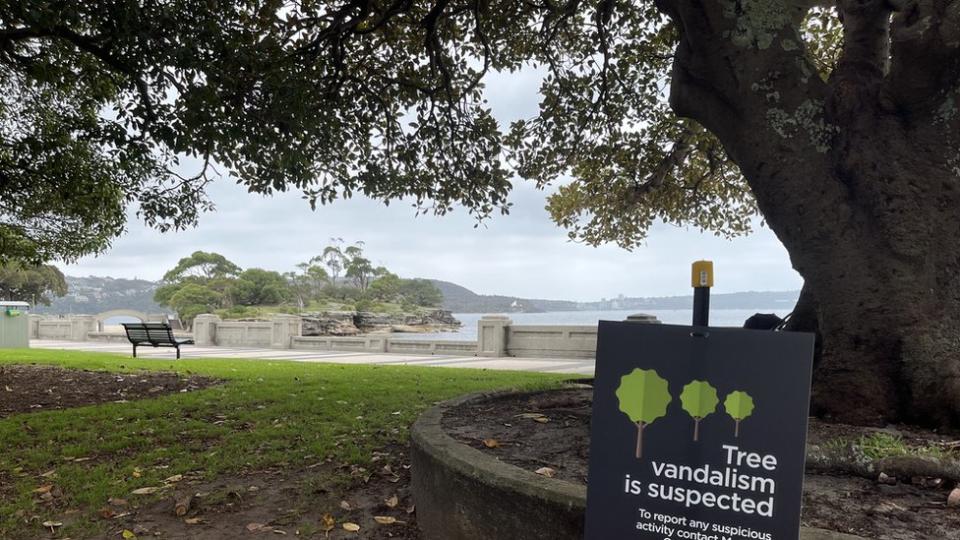
In the meantime, dedicated locals around Sydney have started their own "TreeWatch" patrols.
Ultimately, it was a resident who saved the injured Balmoral figs. They chased off the hooded man and reported the incident to the council.
The next morning, staff washed out the drill holes, applied first aid in the form of growth stimulants, and crossed their fingers.
After a month "on tenterhooks", Ms Corrigan says she is "cautiously optimistic" that all the trees will survive.
"It's just unimaginable what would have happened if those trees had been poisoned… the potential theft from the entire community."

